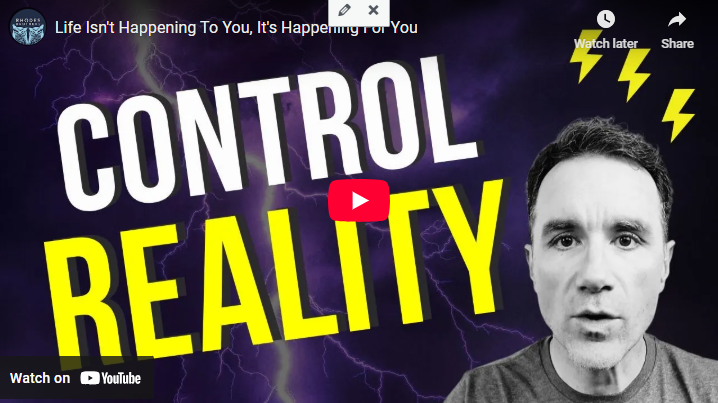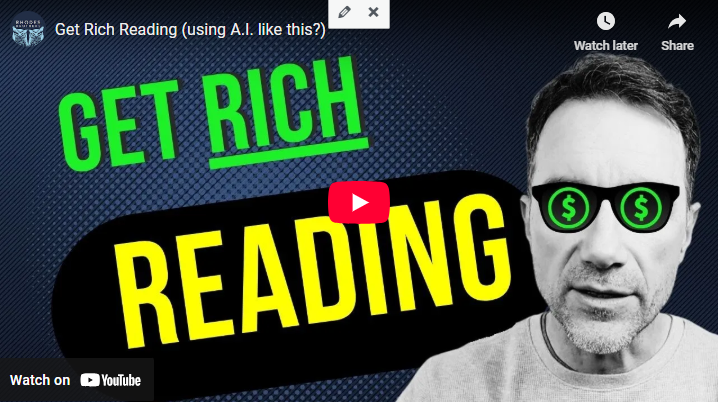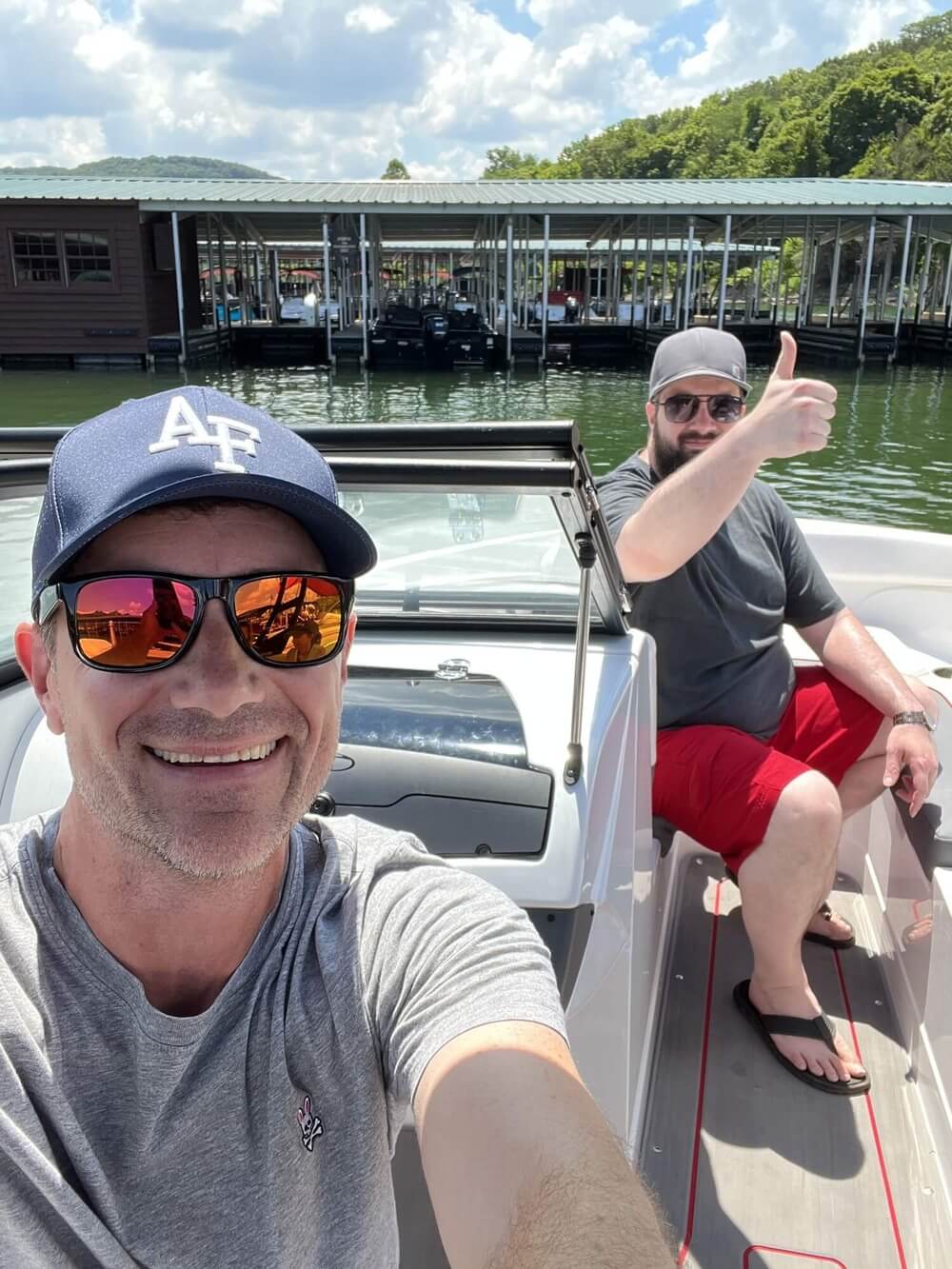Are you ready to kickstart your YouTube journey and build a community of engaged viewers? Getting your first 100 subscribers might seem like a daunting task, but with the right strategies and a bit of creativity, you can reach this milestone faster than you think.
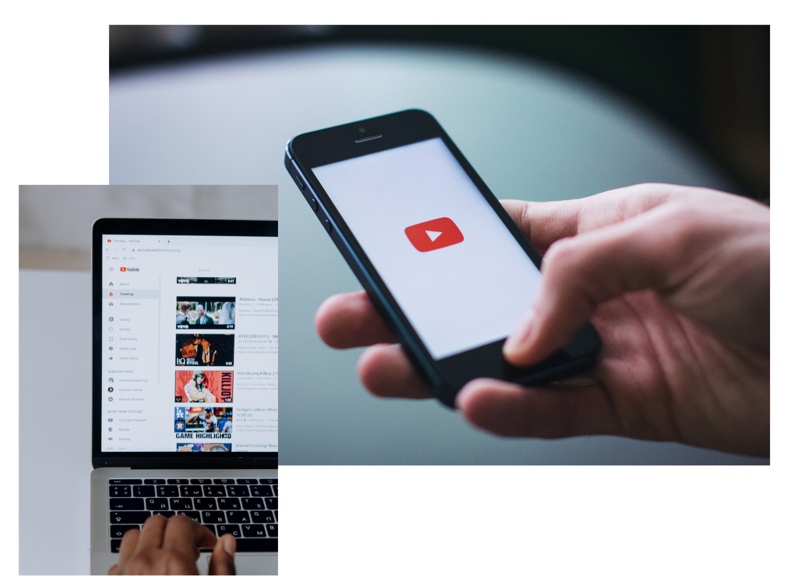
John S. Rhodes of the Rhodes Brothers recently shared their success story, and it’s filled with valuable insights for anyone looking to grow their YouTube presence. As John puts it, “Taking action is the number one secret to success and reaching 100 subscribers.” This simple yet powerful statement sets the tone for a practical approach to channel growth.
In this guide, we’ll explore the proven tactics that helped the Rhodes Brothers surpass the 100-subscriber milestone. Whether you’re just starting out or looking to revitalize your existing channel, these strategies will help you build a loyal audience and set the foundation for long-term success on YouTube.
TL;DR
• Take consistent action by producing videos regularly
• Get comfortable with being uncomfortable on camera
• Provide value and “Eureka moments” to your audience
• Prepare and rehearse your content before filming
• Use ethical incentives to encourage subscriptions and engagement
• Ask for help and engage with your audience
• Believe in yourself and project confidence
• Share your goals and dreams with your viewers
• Tell compelling stories to connect with your audience
• Embrace your unique brand and niche
The Power of Consistent Action
Consistency is the cornerstone of success on YouTube. It’s not about creating perfect content, but rather about showing up regularly and delivering value to your audience. This section will explore how to overcome common obstacles and establish a sustainable content creation routine.
Overcoming the Production Hurdle
The first and most crucial step in growing your YouTube channel is simply to start producing content. As John Rhodes emphasizes, “Many people are going to be very very reluctant to take action.” It’s easy to fall into the trap of endlessly consuming information without ever creating anything yourself. But the key to success lies in consistent production.
Start by setting a realistic publishing schedule, whether it’s once a week or twice a month. Stick to this schedule religiously, even if your early videos aren’t perfect. Done is better than perfect, and you’ll improve with each video you create.
Tools to help you stay consistent:
- Trello: Create a content calendar board to plan and track your video ideas and production schedule.
- Asana: Set up tasks and deadlines for each stage of your video production process.
- Google Calendar: Schedule your filming, editing, and publishing times to keep yourself accountable.
Step-by-step guide to establishing a consistent publishing schedule:
- Determine how much time you can realistically dedicate to content creation each week.
- Choose a publishing frequency that aligns with your available time (e.g., weekly, bi-weekly).
- Create a content calendar for the next month, outlining video topics for each scheduled upload.
- Set specific days for filming, editing, and publishing.
- Use a project management tool to track your progress and set reminders.
- Batch create content when possible to build a buffer of videos.
- Review and adjust your schedule as needed, always prioritizing consistency.
Embracing Imperfection
One of the biggest hurdles for new content creators is the fear of appearing awkward or unprofessional on camera. John advises, “Get comfortable with being uncomfortable.” This mindset shift is crucial for your growth as a creator.
Understand that even experienced YouTubers often dislike the sound of their own voice or feel self-conscious about their appearance. The key is to focus on delivering value to your audience rather than obsessing over your performance.
Tools to improve your on-camera presence:
- Loom: Practice recording yourself and watch the playback to identify areas for improvement.
- OBS Studio: Set up a virtual rehearsal space where you can see yourself as you record.
- Prompster Pro: Use a teleprompter app to help you stay on track during recordings.
Steps to overcome camera shyness:
- Start with audio-only recordings to get comfortable with your voice.
- Practice speaking to the camera for 5 minutes daily, even if you don’t publish the footage.
- Watch your recordings and note three things you did well and one area for improvement.
- Join a local Toastmasters group to improve your public speaking skills.
- Collaborate with other creators to get used to performing in front of others.
Your audience is there for your content, not to judge your appearance.
Crafting Content That Resonates
Creating content that truly connects with your audience is essential for growing your YouTube channel. It’s not just about producing videos; it’s about delivering value, sparking interest, and leaving a lasting impression on your viewers. This section will explore strategies to make your content more engaging, memorable, and shareable.
Delivering “Eureka Moments”
To stand out in the crowded YouTube landscape, your content needs to offer something unique. John suggests, “Give people Eureka moments, add value.” This means creating videos that provide insights, solve problems, or offer a fresh perspective on familiar topics.
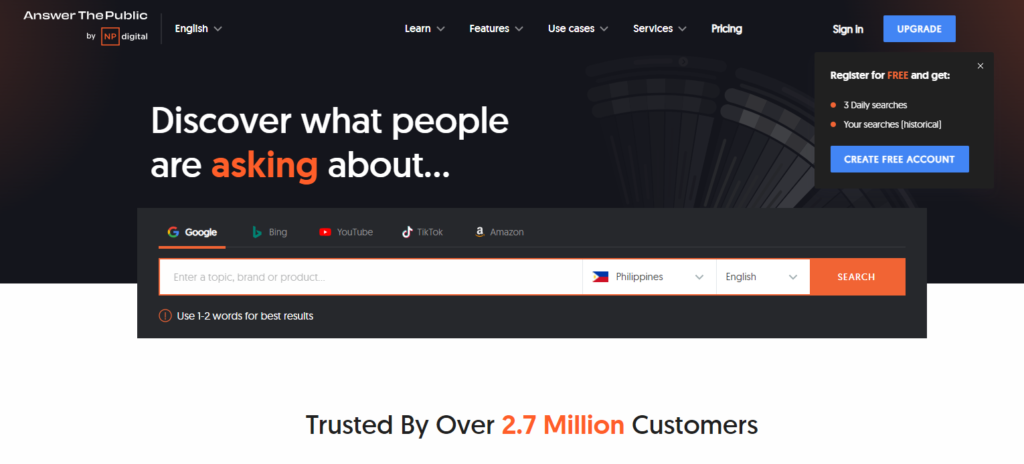
Consider your target audience and what challenges they face. Then, brainstorm ways to address these issues in your videos. Tools like AnswerThePublic or BuzzSumo can help you identify popular questions and topics in your niche.
Tools for content ideation and research:
- AnswerThePublic: Discover questions people are asking about your topic.
- BuzzSumo: Find popular content in your niche and identify gaps you can fill.
- Google Trends: Explore trending topics related to your content area.
- Feedly: Create a curated feed of industry news and insights to inspire your content.
Steps to create value-packed content:
- Identify your target audience’s pain points using surveys or social media polls.
- Research top-performing content in your niche using tools like BuzzSumo.
- Brainstorm ways to present common information from a unique angle.
- Create a “value proposition” for each video: What will viewers gain from watching?
- Structure your content to build up to key “Eureka moments” or revelations.
- Include actionable tips or strategies that viewers can implement immediately.
- End each video with a clear takeaway or call-to-action.
The Art of Preparation
While spontaneity has its place, preparation is key to delivering high-quality content consistently. John recommends, “Know what you’re going to say ahead of time.” This doesn’t mean scripting every word, but rather having a clear outline or set of bullet points to guide your video.
Use tools like Trello or Notion to organize your video ideas and create detailed outlines. This preparation will help you stay on track during filming and ensure you cover all the important points.
Tools for content preparation:
- Notion: Create detailed video outlines and organize your research.
- MindMeister: Use mind mapping to brainstorm and structure your content.
- Evernote: Collect and organize ideas, research, and resources for your videos.
Step-by-step guide to video preparation:
- Create a basic outline with your main topics and subtopics.
- Research key statistics, quotes, or examples to support your points.
- Organize your talking points in a logical flow.
- Prepare any visual aids or props you’ll need during filming.
- Write an engaging introduction and strong conclusion.
- Practice your delivery, focusing on key transitions between topics.
- Set up your filming space and equipment in advance.
Mastering the Mental Game
Success on YouTube isn’t just about technical skills or content strategy; it’s also about developing the right mindset. Many creators struggle with self-doubt, anxiety, and imposter syndrome, which can hinder their progress. This section explores techniques to build mental resilience and confidence, enabling you to perform at your best on camera and stay motivated throughout your YouTube journey.
The Power of Mental Rehearsal
Beyond physical preparation, John emphasizes the importance of mental rehearsal. “The very best rehearsal happens in the mind,” he says. This technique can help you feel more confident and prepared when it’s time to hit record.
Try visualizing yourself delivering your content confidently and engagingly. Practice your delivery in front of a mirror or use a voice recording app to hear how you sound. These exercises can significantly improve your on-camera presence.
Tools for mental preparation:
- Headspace: Use guided meditations to calm nerves and improve focus.
- Calm: Practice visualization techniques to boost confidence.
- Voice Recorder Pro: Record and listen to your delivery to identify areas for improvement.
Steps for effective mental rehearsal:
- Find a quiet space where you won’t be disturbed.
- Close your eyes and take a few deep breaths to center yourself.
- Visualize your filming setup, including the camera and lighting.
- Imagine yourself confidently delivering your content, point by point.
- Mentally rehearse your body language and facial expressions.
- Envision successfully handling potential challenges or mistakes.
- End your visualization on a positive note, feeling satisfied with your performance.
Building Confidence Through Action
As you create more content, you’ll naturally become more comfortable on camera. John advises, “Believe in yourself, smile, embrace confidence.” Confidence is a skill that can be developed over time.
Start small by creating short, low-pressure videos to build your confidence. As you become more comfortable, gradually increase the length and complexity of your content.
Tools to boost confidence:
- Day One Journal: Keep a record of your progress and achievements.
- Strides: Set and track personal development goals related to your YouTube journey.
- Fabulous: Build positive habits that support your content creation efforts.
Steps to build confidence as a content creator:
- Start with 30-second videos on topics you’re passionate about.
- Celebrate small wins, like completing your first video or getting your first comment.
- Seek constructive feedback from trusted friends or fellow creators.
- Join YouTube creator communities for support and encouragement.
- Set small, achievable goals and track your progress.
- Practice positive self-talk before and after filming.
- Gradually increase video length and complexity as your confidence grows.
Engaging Your Audience
Creating great content is only half the battle; the other half is actively engaging with your viewers to build a loyal and interactive community. Engaged viewers are more likely to subscribe, share your content, and return for future videos.
The Art of Ethical Incentives
To encourage subscriptions and engagement, John suggests using “ethical bribes” such as free reports or exclusive content. This strategy can help you build a loyal audience who feels valued and appreciated.
Consider creating a lead magnet, such as an ebook or mini-course, that complements your video content. Offer this as a bonus for subscribers to incentivize channel growth.
Tools for creating and delivering incentives:
- Canva: Design attractive lead magnets like ebooks or cheat sheets.
- LeadPages: Create landing pages for your exclusive offers.
- ConvertKit: Set up email sequences to deliver your incentives and nurture your audience.
Steps to implement ethical incentives:
- Identify a valuable resource that aligns with your content and audience needs.
- Create your lead magnet using tools like Canva or Google Docs.
- Set up a simple landing page to collect email addresses.
- Mention your exclusive offer in your videos and descriptions.
- Use YouTube end screens to direct viewers to your offer.
- Follow up with subscribers via email with additional value and content teasers.
- Regularly update or create new incentives to keep your audience engaged.
The Power of Asking
Don’t be afraid to ask your viewers for support. John emphasizes, “You should be asking for help.” This includes asking for likes, comments, and shares, as well as reaching out to friends and family for initial support.
Include clear calls-to-action in your videos and descriptions. For example, “If you found this video helpful, please hit the like button and subscribe for more content like this!”
Tools to enhance viewer engagement:
- TubeBuddy: Use end screen templates to encourage subscriptions and engagement.
- VidIQ: Analyze top-performing calls-to-action in your niche.
- YouTube Studio: Monitor your engagement metrics to refine your approach.
Steps to effectively ask for audience support:
- Craft a clear, enthusiastic call-to-action for each video.
- Place your main CTA at the beginning and end of your video.
- Use YouTube Cards to suggest related content throughout your video.
- Create a compelling channel trailer that encourages new visitors to subscribe.
- Engage with your audience in the comments section, asking for their thoughts and feedback.
- Use community posts to involve your audience in content decisions.
- Reach out to your personal network for initial support and shares.
Actionable Steps for Growing Your YouTube Channel
For Teenagers (13-19)
- Choose a consistent time to upload that fits your school schedule.
- Use a digital planner app to organize your video ideas and deadlines.
- Start with your smartphone camera and a clip-on microphone for better audio.
- Practice your on-camera skills by making TikTok or Instagram Reels daily.
- Respond to comments during lunch breaks or after school.
- Collaborate with classmates or online friends who also make videos.
- Learn basic SEO techniques through free online courses.
- Share your videos on platforms popular with your age group, like TikTok or Instagram.
- Create themed playlists that appeal to your peers (e.g., study tips, teen life hacks).
- Use YouTube Studio to check your stats weekly and see what content resonates with your audience.
For Young Adults (20-35)
- Set a upload schedule that balances with your work or college commitments.
- Use project management tools like Trello to plan your content strategy.
- Invest in an entry-level DSLR or mirrorless camera and a good USB microphone.
- Join local Toastmasters or improv classes to improve your on-camera presence.
- Dedicate time each day to engage with your community, perhaps during your commute.
- Network at industry events or online forums to find collaboration opportunities.
- Take an online course in digital marketing to master SEO and promotion.
- Leverage LinkedIn and Twitter to share your expertise and videos.
- Create playlists that showcase your skills or knowledge in your professional field.
- Set monthly goals based on your analytics and adjust your content strategy accordingly.
For Middle-Aged Adults (36-55)
- Block out specific times in your calendar for filming and editing.
- Use a physical planner or a family shared calendar to organize your content schedule.
- Invest in a good quality webcam and lighting setup for your home office.
- Practice by recording short videos sharing your expertise or life experiences.
- Set aside time after dinner to respond to comments and engage with your audience.
- Reach out to colleagues or industry peers for collaboration opportunities.
- Attend a local digital marketing workshop to learn about SEO and video optimization.
- Share your videos on Facebook and professional networks relevant to your niche.
- Create playlists that offer value to your peers (e.g., parenting tips, career advice).
- Review your channel performance monthly and align it with your personal or professional goals.
For Seniors (56+)
- Choose a relaxed upload schedule that doesn’t interfere with your daily routine.
- Use a large wall calendar to plan your content ideas and filming days.
- Start with a user-friendly camera with auto-focus and a simple clip-on microphone.
- Practice by sharing stories or advice with family members over video calls.
- Set aside time each morning to read and respond to comments.
- Collaborate with friends or community members who share your interests.
- Ask a younger family member or take a local community class to learn basic SEO.
- Share your videos on Facebook groups related to your interests or age group.
- Create playlists around your life experiences, hobbies, or wisdom to share.
- Have a tech-savvy friend or family member help you review your channel stats monthly.
These adapted steps consider the different lifestyles, technological comfort levels, and interests of each age group while maintaining the core principles of successful YouTube channel growth.
Common Mistakes to Avoid
- Inconsistent Uploading: Failing to maintain a regular posting schedule can lead to audience disengagement.
- Solution: Use a content calendar and batch-create videos to ensure consistent uploads.
- Neglecting Video SEO: Overlooking the importance of optimized titles, descriptions, and tags can hurt your discoverability.
- Solution: Research keywords and incorporate them naturally into your video metadata.
- Focusing Too Much on Numbers: Obsessing over subscriber count can lead to discouragement.
- Solution: Concentrate on creating value for your audience, and the numbers will follow.
- Copying Other Creators: Trying to imitate successful YouTubers instead of developing your unique style.
- Solution: Embrace your authenticity and focus on what makes you unique.
- Ignoring Audience Feedback: Failing to engage with your viewers and adapt based on their input.
- Solution: Regularly read and respond to comments, and use audience suggestions for future content.
Statistics and Research
Custom thumbnails help videos stand out, leading to higher viewer interest and engagement. YouTube reports that 90% of the best-performing videos utilize custom thumbnails, highlighting their effectiveness in capturing audience attention
Frequently Asked Questions
How long does it typically take to reach 100 subscribers?
The time it takes to reach 100 subscribers can vary greatly depending on factors like niche, content quality, and promotion efforts. Some creators may reach this milestone in a few weeks, while others might take several months. The key is to focus on creating consistent, high-quality content rather than fixating on the numbers.
Do I need expensive equipment to start a YouTube channel?
While high-quality equipment can enhance your videos, it’s not necessary when you’re just starting. Many successful YouTubers began with just a smartphone camera. Focus on creating valuable content first, and upgrade your equipment as your channel grows.
How important are video titles and thumbnails?
Titles and thumbnails are crucial for attracting viewers. They’re the first things people see when browsing YouTube. Spend time crafting compelling titles that accurately represent your content and create eye-catching thumbnails that stand out in search results.
Should I focus on short-form or long-form content?
Both short-form and long-form content have their place on YouTube. Short-form content (like YouTube Shorts) can help attract new viewers, while long-form content often leads to higher watch time and stronger audience engagement. Experiment with both to see what works best for your niche and audience.
How can I promote my YouTube channel outside of the platform?
Share your videos on other social media platforms, participate in online communities related to your niche, collaborate with other creators, and consider starting a blog or podcast that complements your YouTube content.
Is it better to stick to one niche or cover various topics?
While covering various topics can attract a broader audience, focusing on a specific niche often leads to more loyal subscribers and faster growth. Choose a niche that aligns with your passions and expertise.
How often should I upload new videos?
Consistency is more important than frequency. Choose a schedule you can maintain long-term, whether that’s once a week or three times a week. What matters most is that your audience knows when to expect new content from you.
How can I improve my on-camera presence?
Practice regularly, even when you’re not filming. Watch your videos back and note areas for improvement. Consider taking public speaking or acting classes to boost your confidence and presentation skills.
What should I do if my channel growth stagnates?
Analyze your analytics to identify which videos perform best and why. Experiment with different types of content, collaborate with other creators, and ask your audience for feedback. Sometimes, a fresh approach or new perspective can reignite channel growth.
How important is audience engagement for channel growth?
Audience engagement is crucial for channel growth. Respond to comments, create content based on viewer suggestions, and foster a community around your channel. Engaged viewers are more likely to share your content and become loyal subscribers.
Your YouTube Journey Starts Now
Embarking on your YouTube journey can feel daunting, but armed with the strategies and insights shared by the Rhodes Brothers, you’re well-equipped to reach your first 100 subscribers and beyond.Success on YouTube isn’t just about numbers—it’s about creating value, connecting with your audience, and staying true to your unique voice.
As you implement these tactics, keep in mind that growth takes time and persistence. Celebrate small victories along the way, learn from your setbacks, and always focus on improving your craft. Your dedication and consistency will pay off as you build a loyal community around your content.
Now, it’s time to take action. Choose one strategy from this guide and implement it today. Whether it’s planning your next video, optimizing your channel description, or reaching out to potential collaborators, every step forward brings you closer to your goals.
For the latest videos and information to help you grow your channel, we encourage you to check out and subscribe to the Rhodes Brothers YouTube Channel. Your next big breakthrough might be just one video away!
Resource List
Books
- “YouTube Secrets: The Ultimate Guide to Growing Your Following and Making Money as a Video Influencer” by Sean Cannell and Benji Travis
- “YouTube Marketing: A Comprehensive Guide for Building Authority, Creating Engagement and Making Money Through YouTube” by Charles Edwards
- “Tube Ritual Volume I: Jump-start Your Journey to 5000 YouTube Subscribers!” by Brian G. Johnson
Courses and Podcasts
- “YouTube Creator Academy” – Free course offered by YouTube
- “TubeBuddy Express” – YouTube growth podcast
- “Video Creators” podcast by Tim Schmoyer
Tools
- TubeBuddy – Browser extension for YouTube channel management and optimization
- VidIQ – YouTube analytics and optimization tool
- Canva – Graphic design platform for creating thumbnails and channel art
- Filmora – Video editing software for beginners and intermediate users
- Adobe Premiere Pro – Professional video editing software
- Ahrefs – SEO tool for keyword research and content optimization
- OBS Studio – Free and open-source software for video recording and live streaming
- Descript – All-in-one audio/video editing, transcription, and collaboration tool
- Epidemic Sound – Royalty-free music library for content creators
- Hootsuite – Social media management platform for cross-promotion
Blogs and Websites
- Social Blade – YouTube analytics and statistics website
- Creator Insider – YouTube’s official channel for creator news and tips
- Backlinko – SEO and content marketing blog with YouTube-specific resources
- Think Media – YouTube channel and website dedicated to video gear and growth strategies
- Video Influencers – Channel and website offering YouTube growth tactics
Communities
- r/NewTubers – Reddit community for new YouTube creators
- YTTalk – Forum for YouTube creators to share tips and experiences
- Gleam Rewards – Platform for running YouTube-centric giveaways and contests
Analytics Tools
- YouTube Studio – YouTube’s built-in analytics platform
- Google Analytics – For deeper insights when linked to your YouTube channel
- Socialblade – For tracking channel growth and comparing with competitors
Thumbnail Creation
- Canva – User-friendly graphic design tool
- Adobe Photoshop – Professional image editing software
- Snapseed – Mobile app for on-the-go thumbnail editing
Video Idea Generation
- AnswerThePublic – Discover what people are asking about your topics
- BuzzSumo – Find popular content in your niche
- Google Trends – Explore trending topics related to your content
Collaboration Platforms
- Collabspace – Platform for finding collaboration opportunities with other creators
- Channel Crawler – Tool for finding YouTube channels in your niche
Monetization Resources
- YouTube Partner Program – Official monetization program for eligible creators
- Patreon – Platform for creators to receive financial support from fans
- Amazon Associates – Affiliate program for product recommendations
These resources cover a wide range of areas crucial for YouTube success, from content creation and channel optimization to audience growth and monetization. Remember to explore these tools and platforms gradually, focusing on those that align best with your current goals and channel stage.


